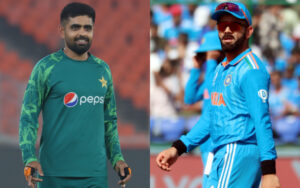
This match evokes different memories in different generations of Indian cricket fans. For some, it’s about India’s 7-0 record against Pakistan in the World Cup. They mostly have happy recollections. India have dominated their neighbours from the other side of the Wagah border this century and done better than them as a team in global 50-over tournaments.
It was something else for those who grew up in the 1980s. Facing Pakistan became a matter of fear for the fainthearted after Javed Miandad’s last-ball six off Chetan Sharma in the Australasia Cup final in 1986. Sharjah, where international cricket set foot with the Asia Cup won by India in 1984, turned into a theatre of nightmares. The experience was no different on Indian soil.
This had a pattern. Many of those were close games, where India would seize the initiative after hours of struggle. Pakistan would then find someone out of the blue who would snatch it from India in the end. This happened match after match. The player could be someone as well known as Salim Malik in one game, and a journeyman like Manzoor Elahi in another.
Sometimes, there would be humiliation, like in Sharjah in the 1990s when Aaqib Javed’s hat-trick flattened India. In the 1987 series in which Malik took away India’s game at Eden Gardens, Pakistan were 5-1 winners. India’s lone win was actually a tie. They were declared winners for losing fewer wickets. Everything Imran Khan tried clicked. This included digging players out of oblivion and extracting match-winning performances from them.
Marvelling at Azeem Hafeez, Salim Jaffer and Wasim Akram, Indians would bemoan their perennial lack of a left-arm quick. The delivery from over the wicket angling away from the right-hander and coming back in at the last moment was for them to suffer. They were not to have one of their own hurling those. Why left-armers, fast bowlers of any kind were India’s envy, neighbour’s pride!
The beginning of the 7-0 run was a part of the process of slowly turning the tide. It coincided with the rise of Sachin Tendulkar. He was 19 and Player of the Match in the first World Cup showdown between the sides in Sydney in 1992. Between that and the last-ball six, the head-to-head record was Pakistan 16, India 3. Months earlier, India had broken their losing streak in Sharjah. Tendulkar contributed to that as well.
The boy wonder was a big factor. When he was 16, his mauling of Abdul Qadir in an unofficial match in Pakistan marked a turning point. It was not immediately evident, but took place quietly. Manoj Prabhakar’s role was crucial too. He decoded reverse-swing on the same tour in 1989 and the sight of him uprooting stumps with yorkers was a relief for fans hitherto at the receiving end of those.
Things became more even after Sydney. Javagal Srinath matched the world’s fastest for pace. Anil Kumble added teeth to the attack. A bowling line-up used to containing found wicket-taking options. Sourav Ganguly had a stellar series in Toronto. Emerging players like Ajay Jadeja were better fielders. As a team, India improved. From 1996 to 2003, it was India 18 and Pakistan 25.
It turned decisively in favour of India during the transformation under Mahendra Singh Dhoni. The team got better and better, not only against Pakistan. Dhoni oversaw an overhaul of the one-day philosophy, invented methods and scaled new peaks in places like Australia. The wait for a left-arm quick had ended before his era. There were Zaheer Khan, Ashish Nehra, Irfan Pathan and RP Singh. In an ODI, India even fielded a three-man pace attack of left-armers.
By the time India made it 5-0 in World Cups in 2011, this was no longer a 50-50 contest. There was a favourite. This has not changed. Starting from 2004, it has been India 26, Pakistan 21. From 2010, it’s 11-4. The contrasting financial might of the two boards played a part in this change of fortunes. So did the periods of turmoil in Pakistan cricket due to matters off the field. Complications arising out of the security situation made things worse. The cumulative effect was destabilising for the team.
Of late, Pakistan have staged a revival of sorts. The current crop seems to be devoid of the baggage their seniors had to bear the weight of. This bunch looks better organised than the last few which lost World Cup encounters against India. They became No. 1 in the ICC ODI rankings for a short period before being overtaken by the Men in Blue. In Ahmedabad, Pakistan will try to cause an upset. From the days of Sharjah, that’s a paradigm shift that only those who are greying or fully grey can appreciate.




